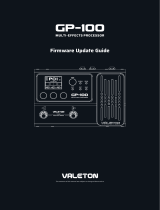
D-Link DNS-343 User Manual
2
Table of Contents
Table of Contents ...................................................2
Product Overview ...................................................4
Package Contents ..........................................................................4
System Requirements ....................................................................4
Introduction ...................................................................................5
Features .........................................................................................6
Hardware Overview ........................................................................7
Front View ..............................................................................7
Rear Panel (Connections) .......................................................8
Using the OLED .............................................................................9
Installation ......................................................... 10
Hardware Setup ...........................................................................10
Conguration ...................................................... 12
Easy Search Utility .......................................................................12
Getting Started .............................................................................13
Web User Interface ............................................... 16
Setup Section ..............................................................................16
Wizard Page .................................................................................17
LAN Page .....................................................................................20
Time and Date Page .....................................................................21
Device Page - Workgroup ............................................................22
Device Page - Active Directory .....................................................23
Advanced Section ........................................................................24
RAID Page ...................................................................................25
Users / Groups Page ....................................................................27
Quotas Page ................................................................................28
Network Access Page (SMB) .......................................................29
Network Access Page (NFS) ........................................................31
FTP Server Page ..........................................................................32
FTP Server behind a Router ..................................................34
FTP over TLS ........................................................................35
UPnP AV Server Page ..................................................................39
iTunes Server Page ......................................................................39
DHCP Server Page .......................................................................41
LLTD Page ...................................................................................41
Remote Backup Page ...................................................................42
Remote Backup - Source ......................................................43
Remote Backup - Destination ...............................................44
Add-ons Page ..............................................................................45
Language Pack ............................................................................46
Maintenance Section ...................................................................47
Admin Password Page .................................................................48
System Page ................................................................................49
Firmware Upgrade Page ...............................................................50
OLED Firmware Upgrade .............................................................51
E-Mail Alerts Page .......................................................................54
Power Management Page ............................................................56
Dynamic DNS Page .....................................................................57
OLED Display Page ......................................................................57
Disk Diagnostics Page .................................................................58
Status Section ..............................................................................59
Device Information Page ..............................................................60





















